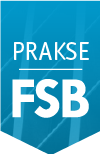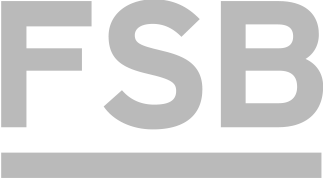International Exchange
Course details
Student Mobility > Programmes and Courses > Courses in English > Course detailsShip Outfit
- Teaching: Completely taught in English
- ECTS: 6
- Level: Graduate
- Semester: Summer
- Prerequisites:
- None
- Load:
Lectures Exercises Laboratory exercises Project laboratory Physical education excercises Field exercises Seminar Design exercises Practicum 45 0 0 0 0 0 0 0 - Course objectives:
- Introduction into the ship outfit: division, development and achievement, design requirement, economic calculations and time spent at the port depending on the ship equipment. Characteristics of cargo and types of merchant ships (general cargo ship, tanker, bulk carrier, containership, RoRo ship). Understanding of ship equipment systems with scope that students after graduating can participate in ship design.
- Student responsibilities:
- Grading and evaluation of student work over the course of instruction and at a final exam:
- Continuous monitoring of the work and dedication through the lectures. Evaluation of colloquium results, individual assignments and final exam. Total course mark percentage summary: Ship outfit individual assignments 1, 2 & 3 30% of mark Colloquium 1 and 2 ( or written exam) 40% of mark Oral exam 30% of mark Total 100% Course grading for the final mark 50% - 60% 2 (satisfactory) 61% - 75% 3 (good) 76% - 90% 4 (very good 91% - 100% 5 (excellent)
- Methods of monitoring quality that ensure acquisition of exit competences:
- Students individually work on practical assignments and make necessary reports. Assignment results are commented with the students. By interaction with the students during lectures, by asking questions, the continuity of the comprehension of teaching content is checked and so as acquisition of competencies and skills in accordance with the learning outcomes.
- Upon successful completion of the course, students will be able to (learning outcomes):
- After successful attendance of this course the student will be able to: - Connect ship arrangement with cargo features. - Classify the ship equipment according to type of cargo and ship type. - Analyze fire and navigation equipment in accordance with the requirements of the rules of classification societies. - Compose a list of required lifesaving equipment. - Calculate the required parameters for ventilation, heating, cooling and air-conditioning in the living areas of the ship. - Calculate the required parameters for ventilation, heating, cooling and air-conditioning systems in the engine room. - Categorize fire resistance of ship bulkheads and decks. - Verify the system parts for liquid cargo according the required flows for the given necessary time of cargo unloading / loading. - Arrange in accordance to the ship type anchoring and mooring equipment.
- Lectures
- 1. Introduction lecture. Introduction of course contents, literature. General about design requirement, technical description, shipbuilding contract. Newbuilding price, operating costs and freight rate.
- 2. Characteristics of cargo and tankers. Crude oil carriers, product carriers, chemical tankers, wine, water and fruit juice carriers. LNG and LPG tankers. General arrangement plan. Midship section.
- 3. Characteristics of cargo and bulk carriers. Iron ore, mangan ore, iron pyrite, iron, salt, sulphate, etc. Grain. General arrangement plan. Midship section.
- 4. Characteristics of cargo and general cargo ships. Devices, engines and products, prepared food, drink, fruits, tea, cotton, copper, etc. Multipurpose ships. General arrangement plan. Midship section.
- 5. Characteristics of cargo and ships for standardized cargo (containerships, RoRo ships, car carriers, ferries). General arrangement plan. Midship section.
- 6. Anchoring equipment - design requirement, technical description, arrangement, classification society rules. Anchors, anchor chain cables, ropes, chain locker, hawse pipes. Windlass and chain stoppers.
- 7. Steering gear - design requirement, technical description, arrangement, classification society rules. Rudder, steering.
- 8. Steering gear - steering engine. Auxiliary steering engine, stabilizers.
- 9. Mooring equipment - design requirement, technical description, arrangement, classification society rules. Mooring winch. Mooring lines. Bollards, mooring pipes and chocks.
- 10. Hatch covers for vertical loading - design requirement, technical description, classification society rules. Hatch covers types - one way folding covers; stowing covers; direct folding covers; stowing coiling covers; end rolling and side rolling covers; sliding covers on tweendeck; lift away pontoon covers; telescopic and covers for flexible rolling.
- 11. Cargo access equipment for horizontal loading. Ramps. Bow ports. Elevators. Side doors. Bulkheads doors. Moveable decks. Dimensions and weights.
- 12. Cargo handling equipment - design requirement, technical description, classification society rules. Cargo system for liquid cargo. Oil and product tanker cargo system. Pumps. Pipelines. Cargo gear for bulk cargo. Transport with pipelines in form of silt. Pneumatic discharging equipment. Cargo gear for break-bulk cargo - for general cargo and pallets, for containers.
- 13. Ventilation, heating, cooling, air-conditioning. Ventilators. Ventilation system calculation. Heating system. Air-conditioning system. Diagrams for estimation of air conditioning. Engine-room ventilation. Cooling system - calculation.
- 14. Safety and lifesaving equipment, fire extinguishing and navigation equipment. Rules, design requirement, technical description. Lifesaving appliances. Fire extinguishing equipment. Navigation equipment.
- 15. Design and standardization of accommodation. Design requirement, technical description. Equipment in accommodation area and standardization of accommodation. Design and arranging of bridge deck. Equipment and devices for food preparation.
- Exercises
- 1. Introduction. Ship demarcation and specification. The lightship weight distribution. Example - Panamax tanker.
- 2. Ship costs. Influence of the service speed into operating costs - examples.
- 3. Introduction into loading calculator programs. Loading instrument for bulk carrier, car/truck carrier, general cargo ship, tanker.
- 4. Anchoring system - rules of classification societies. Example.
- 5. Mooring arrangement - example.
- 6. Steering gear - classification societies rules. Example.
- 7. Cargo access equipment for horizontal loading. Car/truck carrier - ramps, doors, moveable decks - example.
- 8. Cargo system for liquid cargo - example.
- 9. Cargo handling equipment for bulk and break-bulk cargo - example.
- 10. Cabin ventilation.
- 11. Hold ventilation. Engine room ventilation.
- 12. Heating of living spaces.
- 13. Cabin air-conditioning.
- 14. Design of accommodation- required volumes and areas for different spaces.
- 15. Independent work (solve real example of equipment).
- Compulsory literature:
- "Ship outfit" lecture notes.
Bosnić, A.; Vukičević, M.; Oprema broda, Sveučilišna naklada "Liber", Zagreb, 1983.
SOLAS, Consolidated edition, IMO, London, 2000.
Pravila i propisi klasifikacijskih društava, kao: Lloyd"s Register of Shipping, Det Norske Veritas, Bureau Veritas, Hrvatski registar brodova, izdanja 1997., 1998., 2000. - Recommended literature:
- Klaas van Dokkum, Ship knowledge, 2nd edition






